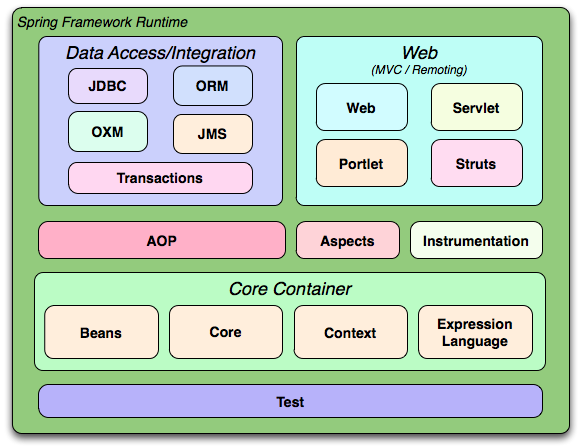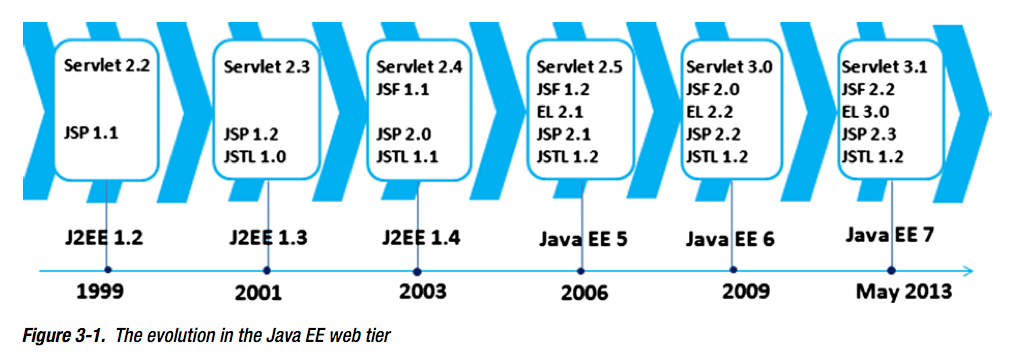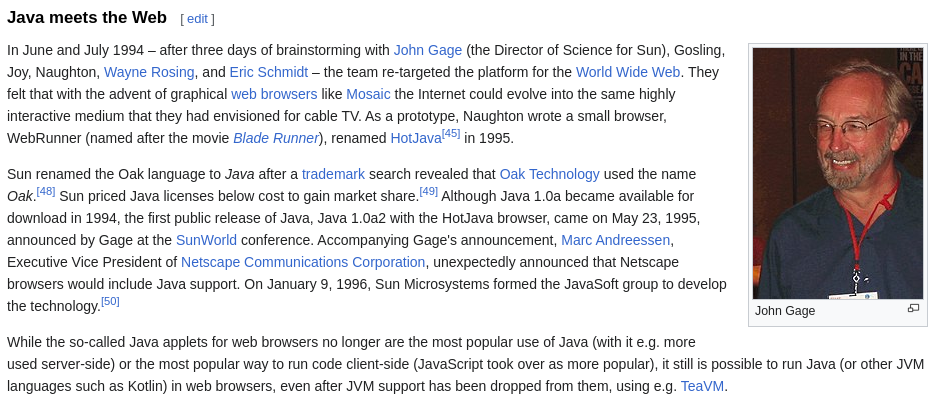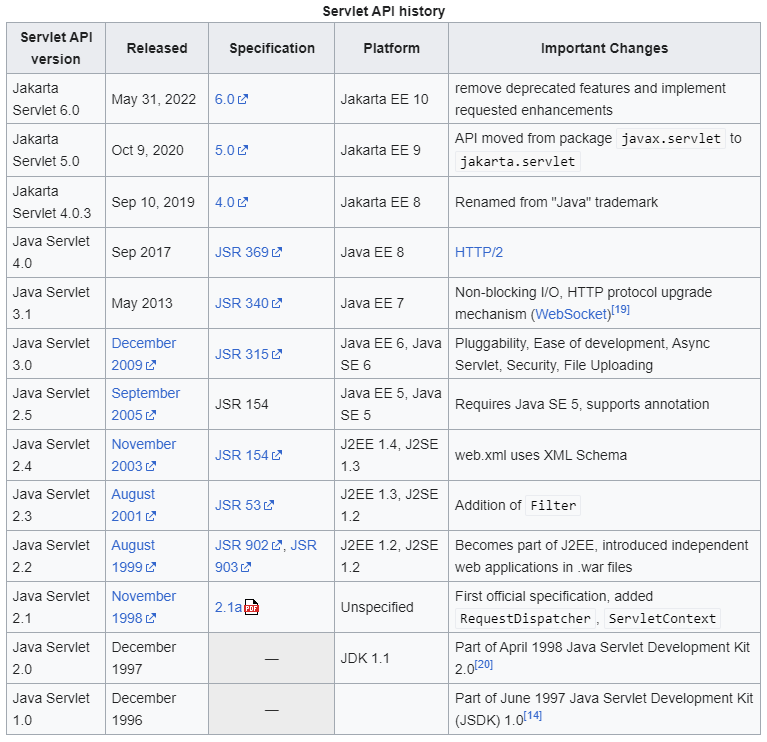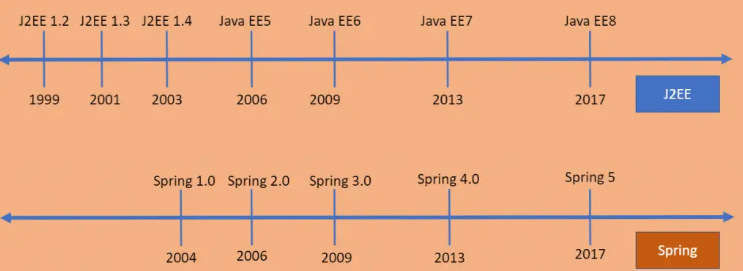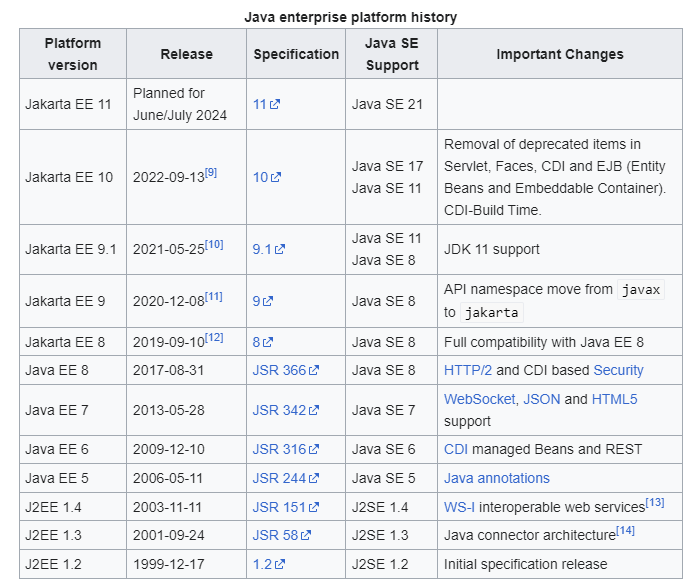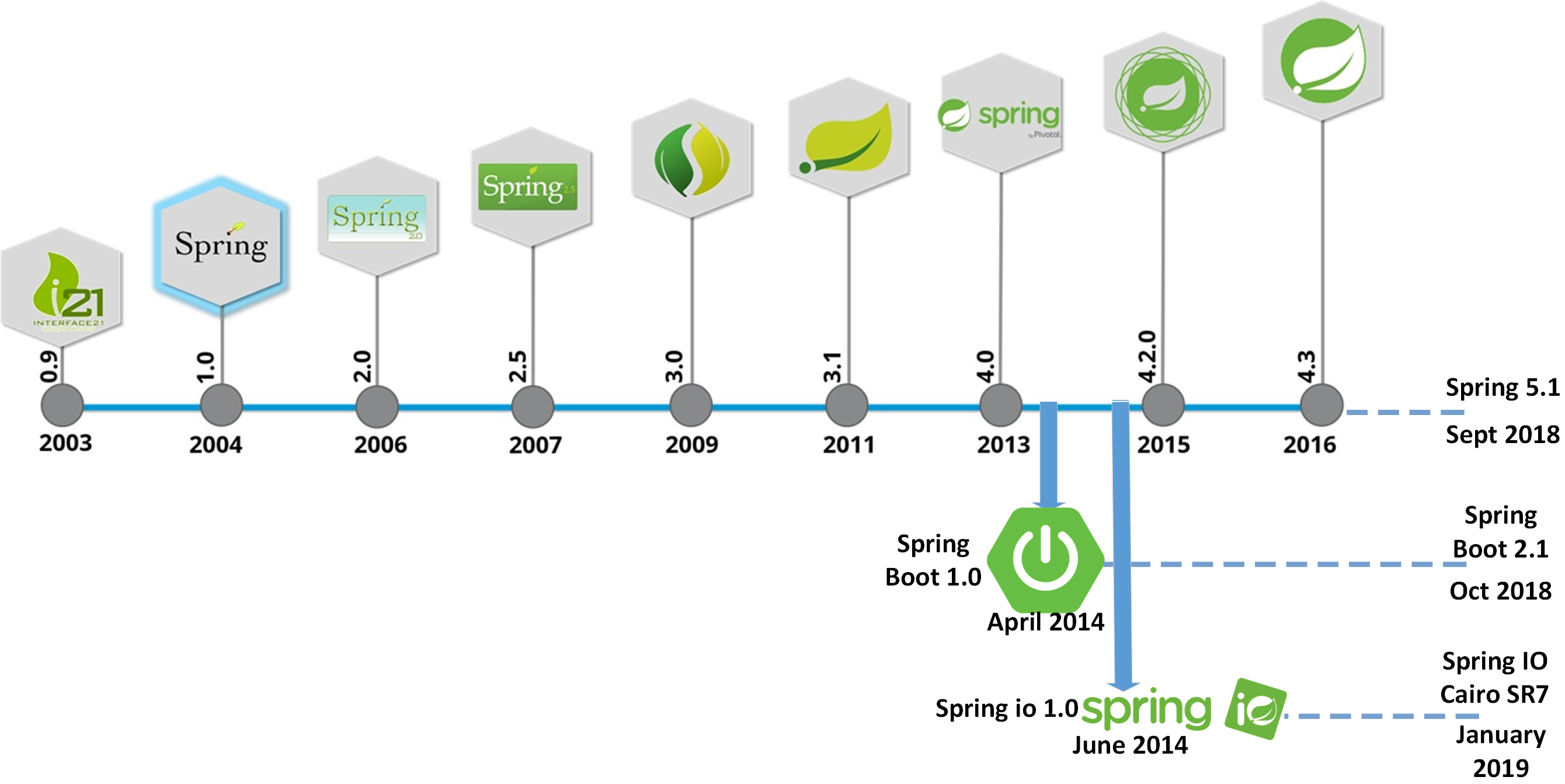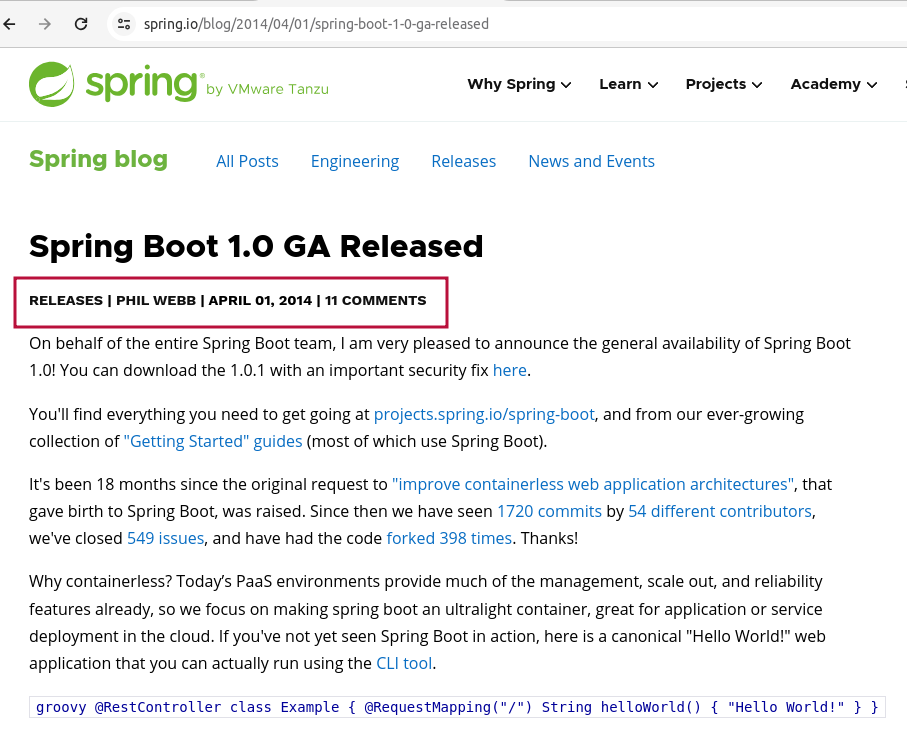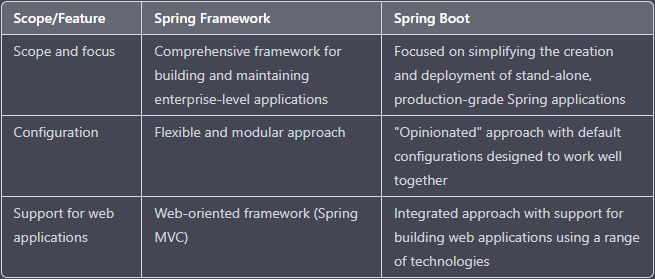Spring Framework
Spring Framework
📘 What is Spring Framework/Platform?
Spring Framework is a open-source powerful lightweight application development platform used for robust, fast and scalable Web Apps with Java.
At its core, Spring framework is really just a dependency injection of control container, with a couple of convenience layers (database access, proxies, aspect-oriented programming, RPC, a web MVC framework) added on top.
Spring Framework is a Java platform that provides comprehensive infrastructure support for developing Java applications. Spring handles the infrastructure so programmers can focus on the application.
Spring enables you to build applications from plain old Java objects (POJOs) and to apply enterprise services non-invasively to POJOs. This capability applies to the Java SEprogramming model and to full and partial Java EE.
1 Overview
The Spring Framework is a popular Java framework for building enterprise-level applications.
Spring Framework is a powerful and popular toolkit for building enterprise-level applications in Java, and provides a wide range of tools and libraries for supporting various aspects of application development.
By using the Spring Framework, developers can take advantage of the framework’s modular design, and can choose the specific modules that are most relevant to their needs and goals.
The Spring Framework provides a comprehensive set of tools and libraries for building and maintaining enterprise applications, and is designed to support the “software development principles of modularity, component-based development, and non-invasive programming”.
The Spring Framework consists of several modules, each of which provides a different set of functionality and tools. Some of the key modules of the Spring Framework include:
Spring Core: The core module provides the fundamental functionality of the
Spring Framework, including dependency injection, inversion of control, and support for aspect-oriented programming.Spring MVC: The MVC (Model-View-Controller) module provides a web-oriented framework for building web applications, and supports the development of web applications using a “front controller” pattern.
Spring Data: The Data module provides tools and libraries for working with data sources and databases, and supports the development of data-oriented applications.
Spring Security: The Security module provides tools and libraries for implementing authentication and authorization in applications, and supports the development of secure applications.
Spring Boot: The Boot module provides a way to quickly and easily create stand-alone, production-grade Spring applications. Spring Boot uses an “opinionated” approach to configuration, which means that it provides a set of default configurations that are designed to work well together, and allows developers to get started quickly without having to spend a lot of time configuring the application.
2 Spring tech stack along the early years
3 Timeline: 1994-2024
3.1 Origins: 1994
Java has come a long way since its inception in 1991 when Sun launched “Project Green”, which tried to integrate digitally controlled consumer devices like TV sets, CD players, and computers.
This was a humble beginning
Sun threw the gauntlet down in 1995 by releasing Java as open source. The feedback was tremendous, and fixed more than just a few bugs. This drove Java deep into the server-side development industry.
In June and July 1994 – after three days of brainstorming with John Gage (the Director of Science for Sun), Gosling, Joy, Naughton, Wayne Rosing, and Eric Schmidt – the team re-targeted the platform for the World Wide Web.
Together, servlets and JSPs pages enabled programmers to develop modular, maintainable, scalable, and portable Web applications with Java.
This was between 1994 and 1995. The Java Servlet API was first publicly announced at the inaugural JavaOne conference in May 1996. The Servlet1 specification was created by Pavni Diwanji while she worked at Sun Microsystems.
By 1996, Java had already become popular among developer for its friendly APIs and automated Garbage Collection and was starting to be widely used in back-end systems.
One problem, however, was that most of these systems needed the same set of standard capabilities – such as persistence, transaction integrity, and concurrency control – which the JDK lacked at that time. That, naturally, led to many home-grown, closed implementations.
IBM stepped forward and released the Enterprise Java Bean (EJB) specification in 1997, with the promise that developers could write code in a standard way, with many of the common concerns automatically handled.
That’s how the first Java framework for the enterprise was born; the specification was later adopted by Sun in 1999 as EJB 1.0.
Fast forward twenty years and EJB 3.2 is now the subset of the JavaEE 9 specification.
Those years saw the release of the first incarnation of Enterprise Java, but soon after, important technologies joined the mix, such as Servlets, Messaging, and Enterprise Java Beans.
3.2 J2EE: 1999
On paper, J2EE was meant to become the standard way of building Java enterprise applications. In other words, it was supposed to be the game-changer in terms of overall architecture.
The platform was known as Java 2 Platform, Enterprise Edition or J2EE from version 1.2, until the name was changed to Java Platform, Enterprise Edition or Java EE in version 1.5.
Everything sounded quite promising with J2EE. However, when it came to actually implementing things using J2EE, everything wasn’t so rosy. Some of the major problems with J2EE were in regards to EJB or Enterprise Java Beans.
Due to these problems, there was discontent among developers with regards to EJB and J2EE.
EJBbecame that bad uncle in the family that you want to avoid because they mess up everything. It basically fell out of favor. That’s when Spring came in.
Rod Johnson, the founder of Spring, started on this journey to create an alternative to J2EE. This led to the birth of Spring Framework.
However, the guys at Sun Microsystems (the creators of Java and J2EE) took note of the rise of Spring. They tried to understand the reasons behind the declining popularity of J2EE. And they also realized that the EJB implementation was the major problem.
So they actually went back and re-engineered EJB. In other words, they made it simpler to use. This coincides with Java EE5 release in 2006. Since then, J2EE has steadily improved with every new version.
Practically speaking, at this point of time, both Spring and J2EE are pretty equal in terms of features. You can basically do the same thing with both the frameworks. However, the J2EE folks were slightly slow to solve the problems and the earlier problems with EJB had tarnished the image of J2EE forever.
It was so late, during this time, Spring has gone from strength to strength. It has gathered a tremendous amount of momentum in the industry and the developer community.
Java EE was maintained by Oracle under the Java Community Process.
On September 12, 2017, Oracle Corporation announced that it would submit Java EE to the Eclipse Foundation.
The Eclipse top-level project has been named Eclipse Enterprise for Java (EE4J).
The Eclipse Foundation could not agree with Oracle over the use of javax and Java trademarks.
Oracle owns the trademark for the name “Java” and the platform was renamed from Java EE to Jakarta EE
3.3 Spring: 2004
As we have seen, IBM set the foundations with EJB specifications. So, Java EE and EJB were the first platforms & specificatios trying to solve the problems around building enterprise Java applications.
Then, the EJB and J2EE specifications/frameworks were to be surpassed by Spring.
The first try, before the rise of Spring, was written by Rod Johnson, who contributed to the understanding of J2EE development practices and with the publication of his book Expert One-on-One J2EE Design and Development in October 2002 mean to develop without EJB.
Roderick “Rod” Johnson is an Australian computer specialist who created the Spring Framework and co-founded SpringSource, where he served as CEO until its 2009 acquisition by VMware.
In 2011, Johnson became Chairman of Neo4j’s Board of Directors. At the JavaOne 2012 it was announced that he joined the Typesafe Inc. Company board of directors. In 2016, he founded Atomist.
Spring Framework was indeed influenced by many concepts discussed in Expert One-on-One J2EE Design and Development, particularly in terms of addressing the complexities and limitations of J2EE development.
Spring provided a more lightweight and flexible alternative to the heavy, XML-configured, and often cumbersome J2EE frameworks of the time. Besides, it worked flawlessly without EJB: more modular, decoupled and with lots of cofiguration options for the users.
The framework was first released under the Apache 2.0 license in June 2003. The first production release, 1.0, was released in March 2004.
The Spring 1.2.6 framework won a Jolt productivity award and a JAX Innovation Award in 2006.
Spring 2.0 introduced in 2006 support for various annotations for configuration purposes.
Spring Framework 4.0 was released in December 2013: Notable improvements in Spring 4.0 included support for Java SE (Standard Edition) 8, Groovy 2, some aspects of Java EE 7, and WebSocket.
Spring 2.0 was released in October 2006, Spring 2.5 in November 2007, Spring 3.0 in December 2009, Spring 3.1 in December 2011, and Spring 3.2.5 in November 2013.
Over the years, one of the most criticized aspects of the Spring Framework was the complex dependency management handled by massive XML configuration files.
This criticism led to the creation of Spring Boot, which opted for annotations instead of XML configurations and simplify the use of the framework.
3.4 Boot: 2014
Spring Boot is an open source project part of the Java Spring Framework designed to simplify the creation of stand-alone, production-grade Spring-based applications.
Spring Boot revolutionized the way production-ready applications were developed, allowing developers to focus more on the application logic rather than spending time on boilerplate code to handle the necessary configurations and dependencies to run the application.
Spring Bootis used in many large enterprise solutions (e.g Netflix, American Express, ESPN, Mobile.de, Wix.com) for the fast building of massive applications, especially web-based ones.
Spring Boot was launched in April 2014 resolving the problem of complex XML configurations by having three notable features that make it both unique and easy to use.
Due to the power of creating Spring-based applications that can “just run,” Spring Boot’s popularity grew faster.
3.5 Boot: 2024
It’s been a long ride!
To sum up where we are now, let’s add this extract from Bootiful Spring Boot in 2024 (part 1).
I’m of the opinion that there’s never been a better time to be a Java and Spring Boot developer. I say that fully aware of where we stand in the span of things today. It’s been 21+ years since the earliest releases of the Spring Framework and 11+ years since the earliest releases of Spring Boot.** This year marks 20 years since the Spring Framework and 10 years since Spring Boot**.
So, when I say there’s never been a better time to be a Java and Spring developer, bear in mind I’ve been in this for the better part of those decades. I love Java and the JVM, and I love Spring, and it’s been amazing.
But this is the best time. It’s never been close. So, let’s develop a new application, as always, by visiting my second favorite place on the internet, after production, start.spring.io, and we’ll see what I mean. Click Add Dependencies and choose
Web,Spring Data JDBC,OpenAI,GraalVM Native Support,Docker Compose,Postgres, andDevtools.
4 Spring Framework vs. Spring Boot
The Spring Framework is a comprehensive framework for building and maintaining enterprise-level applications in Java, while Spring Boot is focused specifically on simplifying the process of creating and deploying stand-alone, production-grade Spring applications.
The Spring Framework provides a flexible and modular approach to configuration, while Spring Boot uses an “opinionated” approach to configuration, which provides a set of default configurations that are designed to work well together.
The Spring Framework provides a web-oriented framework called Spring MVC, while Spring Boot provides a more integrated approach to web application development, and includes support for building web applications using a wide range of technologies.
In general, the Spring Framework and Spring Boot are both useful frameworks for building enterprise-level applications in Java, but have different scopes, focus, and approaches to configuration, and may be more or less suitable for different types of projects and goals.
5 Releases
- You can always find new version announcements on Spring-framework: Last release.
- You can always find new version announcements on Spring-boot: Last release.
The stable version since December 2024 is Spring Boot 3.4.1 Release Notes and Spring framework: 6.2.1.
2024: December (updated)
- The current stable version, as of November 2024, is Spring 6.2.
- The current stable version, as of December 2024, is Spring Boot 3.4.1.
2023
- The current stable version, as of September 2023, is Spring 6.0.1
- The current stable version, as of September 2023, is Spring Boot 3.1.3.
2022
- The current stable version, as of December 2022, is Spring 6.0.2.
- The current stable version, as of December 2022, is Spring Boot 3.0.0.
- Spring Boot 3.0.0 (and therefore the latest Spring Framework 6.0.2) supports Java 19 while also remaining compatible with Java 11 and 8.

